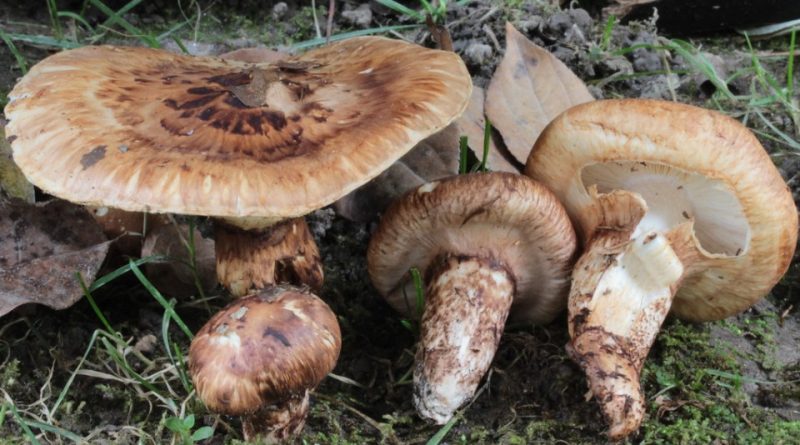Tricholoma caligatum
Tricholoma caligatum
Tricholoma caligatum (Tricholoma caligatum (Viv.) Ricken, 1914) is a basidiomycete fungus belonging to the Tricholomataceae family.
Systematics –
From the systematic point of view it belongs to the Eukaryota Domain, Fungi Kingdom, Basidiomycota Division, Basidiomycetes Class, Order Agaricales, Tricholomataceae Family and therefore to the Tricholoma Genus and to the T. caligatum Species.
The terms: Agaricus caligatus Viv., Armillaria caligata (Viv.) Gillet and Sphaerocephalus caligatus (Viv.) Raithelh are synonyms and obsolete combinations.
Etymology –
The term Tricholoma comes from the Greek ϑρίξ, τριχóϛ thríx, trichόs hair, hair, braid and from λῶμα loma edge: with down along the hem. The specific epithet caligatum comes from the Latin caliga, which means to put on, due to the stem covered by the residues of the general veil.
Geographical Distribution and Habitat –
The Tricholoma caligatum is a fingo that grows gregarious in the coniferous or mixed forests, but above all in the pine forests. The fruiting period is normally between summer and autumn but can also be found in the period between May-June.
Recognition –
This fungus is recognized for having a cap of 8-20 cm in diameter, initially hemispherical, then convex, finally flattened and slightly umbonate, with a convoluted rim joined to the stem in the young by veil residues, is covered by large rusty brown irregular scales with woolly fibrillation lacerations on a whitish background; in the adult fungus the margin of the cap is adorned with residual appendages deriving from the laceration of the veil. The cuticle is removable.
The gills are dense, adorned-rounded, whitish, darkening to the touch.
The stem measures 9-20 cm high and 2-3 cm thick, cylindrical, full, white above the ring, below the ring is covered with scales that give it a “marbled” appearance concolorous to the hat.
The ring is whitish, broad, membranous.
The meat is white, firm, fibrous in the stem, with a pleasant smell of Camembert cheese and a bitter taste.
At the microscope, white, oval, or slightly elliptical, smooth, 6-8 x 4-5.5 µm spores can be seen.
Cultivation –
This fungus, unlike the Tricholoma caligatum var. nauseo sum, which is a variety of T. caligatum is not cultivated.
Uses and Traditions –
The Tricholoma caligatum is a fungus whose specific name cannot fail to remind us of the emperor Gaius Caesar who, since he was a child, donned the caliphs and for this he was nicknamed Caligula “small caliga”.
As for its edibility it is a edible mushroom but not recommended due to its slightly bitter taste and therefore not appreciated by everyone. Furthermore, excessive consumption tends to cause nausea. This fungus gives off a strong smell of Camembert cheese. Essentially, however, it is a mushroom with very few organoleptic qualities and given its rarity it is better not to harvest to safeguard the delicate ecosystems of the woods where it grows.
We also remember that the “Tricholoma caligatum var. nauseo sum “is a variety of T. caligatum well known and appreciated in Japan, where it is known by the name of Tricholoma matsutake.
Preparation Mode –
This mushroom is among the edible mushrooms even if not appreciated by everyone. Instead it has a good yield in oil preservation. In any case, given its rarity, collection is not recommended.
Guido Bissanti
Sources
– Wikipedia, the free encyclopedia.
– Cetto B., 2008. The mushrooms from life, Saturnia, Trento.
– Pignatti S., 1982. Flora of Italy, Edagricole, Bologna.
– Conti F., Abbate G., Alessandrini A., Blasi C. (edited by), 2005. An annotated checklist of the Italian vascular flora, Palombi Editore.
Attention: Pharmaceutical applications and food uses are indicated for informational purposes only, do not in any way represent a medical prescription; therefore no responsibility is assumed for their use for curative, aesthetic or food purposes.


